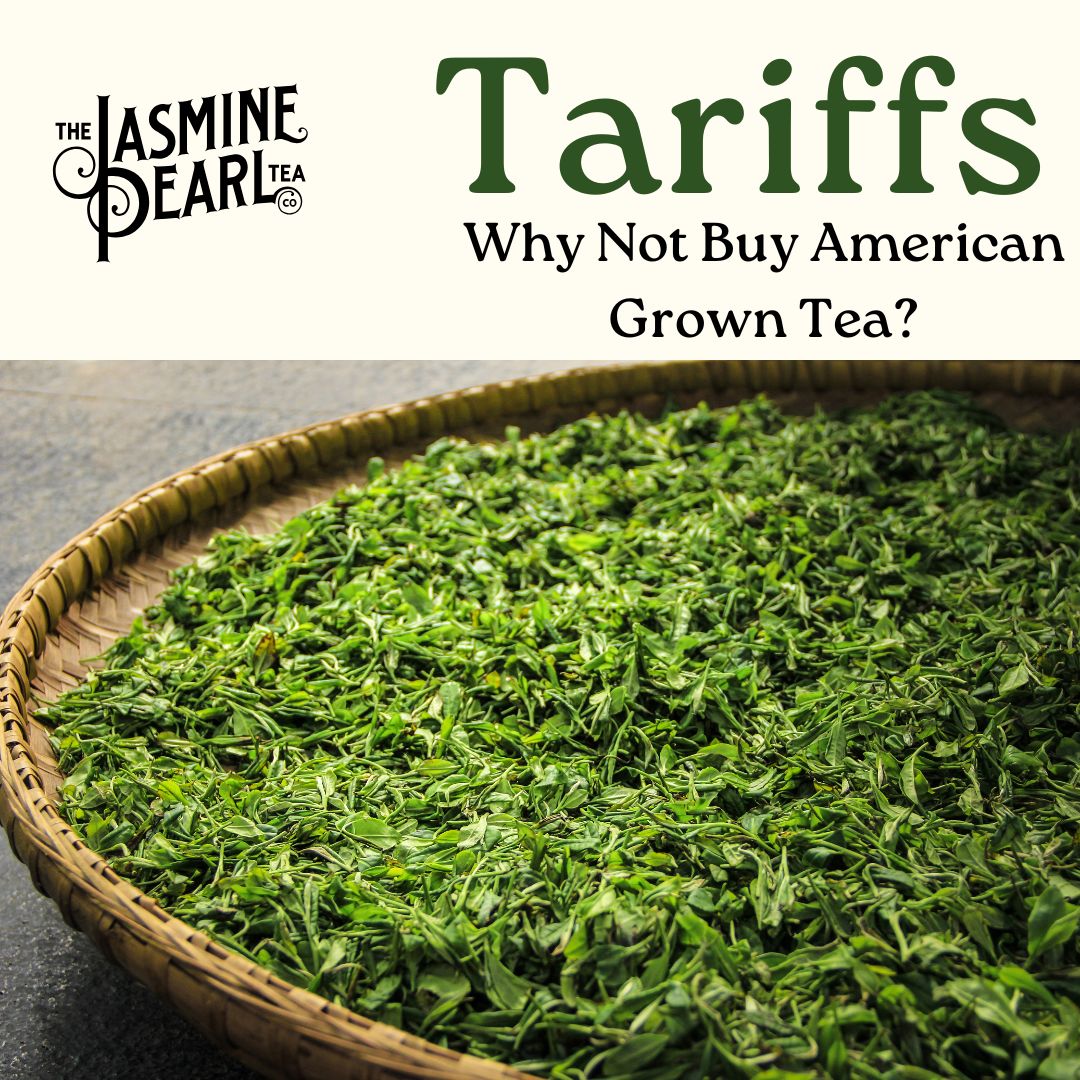Tariffs - Why Not Buy American Grown Tea?
May 26th 2025

Why We Source Teas, Herbs, and Spices from Around the World
At The Jasmine Pearl, we are passionate about sourcing the best possible ingredients for our blends. You may wonder why so much of our tea and many of our herbs and spices come from abroad. The answer comes down to climate, tradition, and practicality.
1. Tea simply isn’t widely grown in the U.S.
U.S. tea production is tiny by global standards. Only about 100,000–120,000 pounds of tea are grown domestically each year, with the majority coming from South Carolina. While a few small farms in Hawaii, Oregon, and other states grow tea, commercial-scale production is extremely limited. Tea plants (Camellia sinensis) thrive in specific climates that combine heat, humidity, rainfall, and elevation—conditions rarely found here at scale.
2. Terroir and generations of expertise matter.
Many of the specialty teas and ingredients we love—like Chinese rolled oolongs, Japanese matcha, Sri Lankan black teas, and fragrant tropical herbs—are tied to the unique soils and climates of their home regions. Just as with wine, tea flavor depends on where and how it’s grown. In addition, these tea-growing regions have generations of experience perfecting traditional harvesting and processing methods that simply don’t exist yet in the U.S.
3. U.S. farmers face big hurdles growing tea and spices.
Tea plants take 3–5 years before they start producing usable leaves. Switching to tea (or many culinary herbs and spices) requires major investment in new equipment and comes with significant financial risk. It’s far more secure for most U.S. farmers to focus on established staple crops like soy, corn, and wheat.
Even though we source globally, we work closely with trusted partners to ensure our ingredients are grown and processed with care. Our goal remains the same: to bring you the highest-quality teas and blends we can find, from the best gardens and farms in the world.

